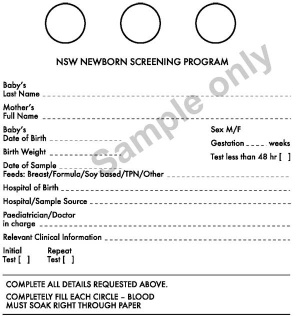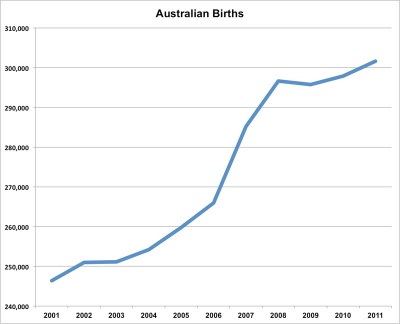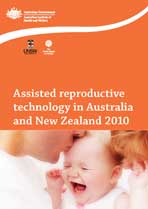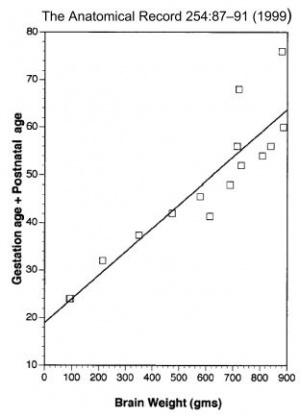Foundations Practical - Neonatal
Newborn Infant
- Some essential systems come online, others continue to develop.
The neonatal period is about the transition from an interuterine placenta and maternally supported life to life to relatively independent life in the external environment.
In developing a broad understanding of the neonatal period you need to think about the two different environments and the effects of loss of placental support. Also remember that substantial postnatal development still has to occur postnatally in the musculoskeletal, nervous and immune systems.
Birth
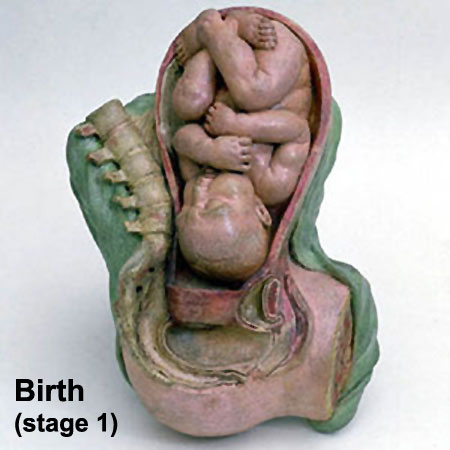
|
<html5media height="500" width="400">File:Birth MRI.mp4</html5media> |
The median duration of gestation for first births from assumed ovulation to delivery was 274 days (just over 39 weeks). For multiple births, the median duration of pregnancy was 269 days (38.4 weeks).
Newborn Homoeostasis
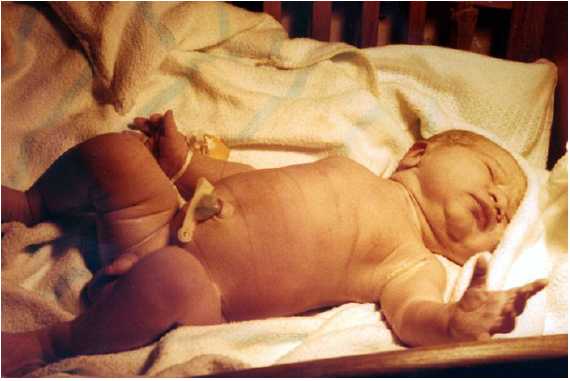
|
The newborn has to establish:
|
Birth Weight
The primary causes of VLBW are premature birth (born <37 weeks gestation, and often <30 weeks) and intrauterine growth restriction (IUGR), usually due to problems with placenta, maternal health, or to birth defects. Many VLBW babies with IUGR are preterm and thus are both physically small and physiologically immature.
| Birth weight (grams) | less 500 | 500 – 999 | 1,000 – 1,499 | 1,500 – 1,999 | 2,000 – 2,499 | 2,500 – 2,999 | 3,000 – 3,499 | 3,500 – 3,999 | 4,000 – 4,499 | 4,500 – 4,999 | 5,000 or more |
| Classification | Extremely Low Birth Weight | Very Low Birth Weight | Low Birth Weight | Normal Birth Weight | High Birth Weight | ||||||
Australian Birth
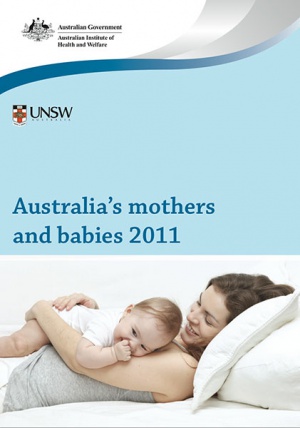
Now briefly consider the current Australian trends in birth and the new reproductive technologies available.
Assisted reproductive technology in Australia and New Zealand
Assisted Reproduction Technology (ART) is also sometimes also used to identify In vitro fertilization (IVF) but now includes many new techniques.
Assisted reproductive technology in Australia and New Zealand 2010[1] 26 Oct 2012
2010 ART treatment cycles
- 61,774 assisted reproductive technology (ART) treatment cycles performed in Australia and New Zealand.
- 23.9% resulted in a clinical pregnancy
- 18.1% in a live delivery (the birth of at least one liveborn baby).
- 12,056 liveborn babies following ART treatments in 2010.
(More? Assisted Reproductive Technology)
Maternal Changes
- Puerperium - six weeks following birth, maternal reproductive organs and physiology return to pre-pregnancy state.
- Involution - process of tissue catabolism of uterus.
- Lochia - uterine (placental) discharge, blood plus mucous, continues for about 4 weeks.
- Mammary - glandular development and function.
Development does not finish at Birth
Many systems continue to grow and differentiate after birth, in particular neural, sensory, respiratory, renal, endocrine and genital.
Newborn Brain Changes
Complex and ongoing processes of neurological development continue postnatally. This can be seen at the very basic level by simply measuring the increase in overall brain weight.
Foundations Practical: Introduction | Week 1 and 2 | Week 3 and 4 | Week 1 to 8 | Week 9 to 36 | Neonatal | Critical Periods | Additional Resources | Quiz
Glossary: A | B | C | D | E | F | G | H | I | J | K | L | M | N | O | P | Q | R | S | T | U | V | W | X | Y | Z | Numbers
Cite this page: Hill, M.A. (2024, April 16) Embryology Foundations Practical - Neonatal. Retrieved from https://embryology.med.unsw.edu.au/embryology/index.php/Foundations_Practical_-_Neonatal
- © Dr Mark Hill 2024, UNSW Embryology ISBN: 978 0 7334 2609 4 - UNSW CRICOS Provider Code No. 00098G
- ↑ AIHW, Macaldowie A, Wang YA, Chambers GM & Sullivan EA 2012. Assisted reproductive technology in Australia and New Zealand 2010. Assisted reproduction technology series. Cat. no. PER 55. Canberra: AIHW. Online Summary | PDF

